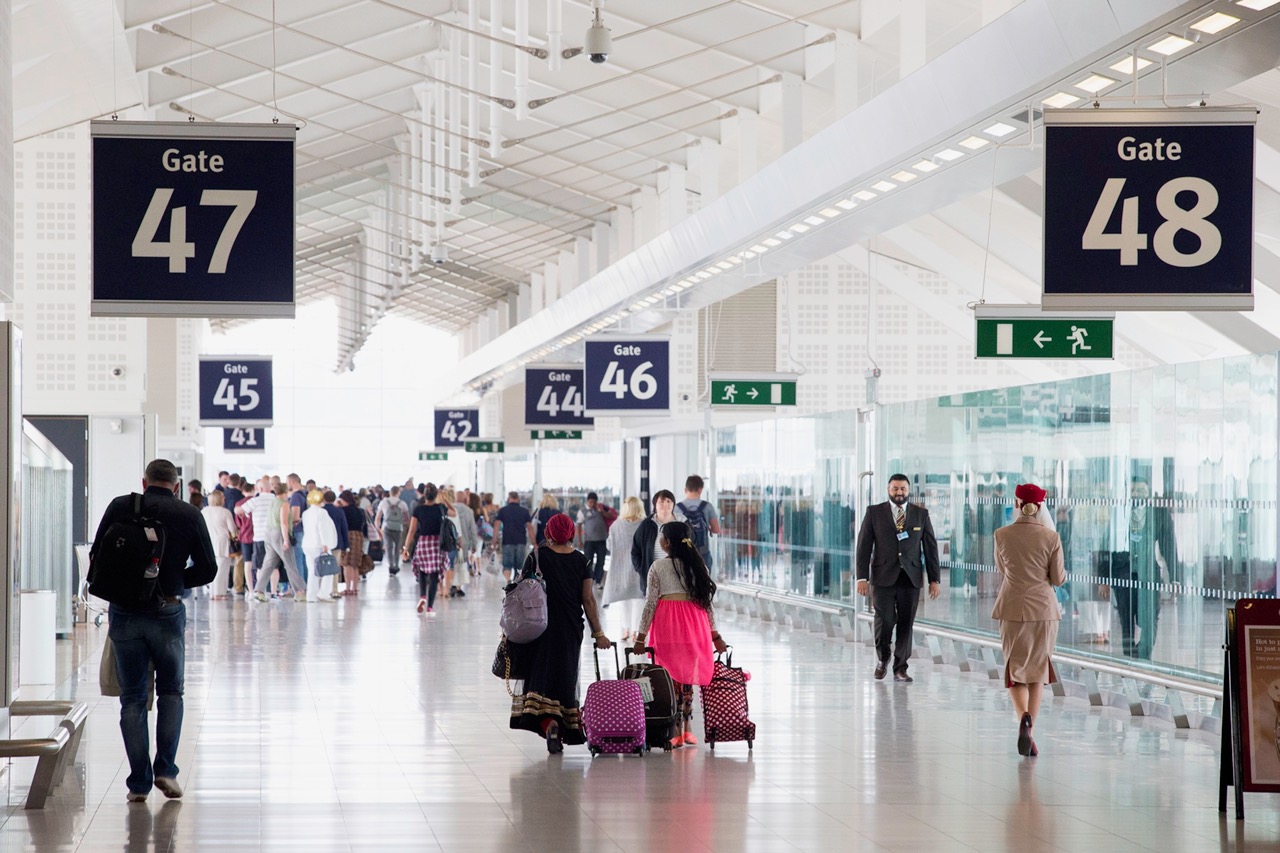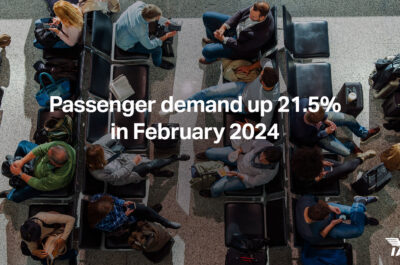Domestic travel demand grew by 7.8% year-on-year in July, broadly in line with 8.0% growth recorded in June. All markets saw annual increases, with China, India and Russia posting double-digit growth rates.
GENEVA – The International Air Transport Association (IATA) announced healthy global passenger demand for July with all regions reporting growth. Total revenue passenger kilometers (RPKs) rose 6.2%, compared to the same month last year. While this was down from 8.1% year-over-year growth in June, it nevertheless marked a solid start to the peak passenger demand season. Monthly capacity (available seat kilometers or ASKs) increased by 5.5% and load factor rose 0.6 percentage point to a record high for July of 85.2%.
“The industry posted another month of solid traffic growth. And the record load factor shows that airlines are becoming even more efficient in terms of deploying capacity to meet demand. However, rising costs — particularly fuel – will likely limit the stimulus we would expect from lower airfares. Therefore, we do expect to see a continued slowing of growth compared to 2017,” said Alexandre de Juniac, IATA’s Director General and CEO.
|
July 2018 |
World share¹ |
RPK |
ASK |
PLF |
PLF (level)³ |
|
Total Market |
100.0% |
6.2% |
5.5% |
0.6% |
85.2% |
| Africa |
2.2% |
3.5% |
0.8% |
2.0% |
75.9% |
|
Asia Pacific |
33.7% |
9.4% |
7.9% |
1.1% |
82.9% |
|
Europe |
26.6% |
4.6% |
4.0% |
0.5% |
89.0% |
|
Latin America |
5.2% |
5.3% |
5.9% |
-0.5% |
84.2% |
|
Middle East |
9.5% |
4.5% |
6.1% |
-1.2% |
80.1% |
|
North America |
23.0% |
5.0% |
4.0% |
0.9% |
87.5% |
¹% of industry RPKs in 2017
²Year-on-year change in load factor
³Load factor level
International Passenger Markets
July international passenger demand rose 5.3% compared to July 2017, which was a deceleration compared to the 8.2% growth recorded in June. Total capacity climbed 4.7%, and load factor edged up half a percentage point to 85.0%. All regions reported growth, led by Asia-Pacific for the first time in three months.
- Asia-Pacific airlines’ July traffic rose 7.5% over the year-ago period, a slowdown compared to June growth of 9.6%. Capacity increased 6.0% and load factor rose 1.1 percentage points to 82.1%. Growth is being supported by a combination of robust regional economic growth and an increase in route options for travelers.
- European carriers posted a 4.4% rise in traffic for July compared to a year ago, down from 7.1% annual growth in June. On a seasonally-adjusted basis, passenger volumes have been tracking sideways for the past three months, reflecting mixed developments on the economic front and possible traffic impacts related to air traffic control strikes across the region. Capacity rose 3.9%, and load factor climbed 0.5 percentage point to 89.1%, highest among the regions.
- Middle East carriers had a 4.8% increase in demand for July, well down on the 11.2% growth recorded for June, although this mainly is attributable to volatility in the data a year ago, rather than any major new developments. The region has been negatively impacted by a number of policy measures over the past 18 months, including the ban on portable electronic devices and travel restrictions. July capacity climbed 6.5% compared to a year ago and load factor dropped 1.3 percentage points to 80.3%.
- North American airlines’ traffic climbed 4.1% compared to July a year ago. This was down from 6.0% growth in June, but still ahead of the 5-year average pace for carriers in the region as strong momentum in the US economy is helping underpin a pick-up in international demand for airlines there. July capacity rose 2.8% with the result that load factor climbed 1.1 percentage points to 87.2%, second highest among the regions.
- Latin American airlines experienced a 3.8% rise in traffic in July, the slowest growth among the regions and a decline from 5.6% year-over-year growth in June. Capacity rose 4.6% and load factor slid 0.6 percentage point to 84.2%. Signs of softening demand have come alongside disruption from the general strikes in Brazil.
- African airlines’ July traffic rose 6.8%, second highest among the regions. Although this represented a decline from 11.0% growth recorded in June, the seasonally-adjusted trend remains strong. Capacity rose 3.9%, and load factor jumped 2.1 percentage points to 76.0%. Higher oil and commodity prices are supporting economies in a number of countries.
Domestic Passenger Markets
Domestic travel demand grew by 7.8% year-on-year in July, broadly in line with 8.0% growth recorded in June. All markets saw annual increases, with China, India and Russia posting double-digit growth rates. Domestic capacity climbed 6.9%, and load factor rose 0.8 percentage point to 85.6%.
|
July 2018 |
World share¹ |
RPK |
ASK |
PLF |
PLF |
|
Domestic |
36.2% |
7.8% |
6.9% |
0.8% |
85.6% |
| Australia |
0.9% |
1.5% |
0.9% |
0.4% |
81.4% |
|
Brazil |
1.2% |
8.4% |
9.1% |
-0.6% |
83.7% |
|
China P.R |
9.1% |
14.8% |
14.3% |
0.4% |
84.6% |
|
India |
1.4% |
18.3% |
12.2% |
4.4% |
86.9% |
|
Japan |
1.1% |
1.0% |
-2.0% |
2.2% |
71.8% |
|
Russian Fed. |
1.4% |
10.8% |
10.2% |
0.5% |
90.9% |
|
US |
14.5% |
5.6% |
4.7% |
0.8% |
87.9% |
¹% of industry RPKs in 2017
²Year-on-year change in load factor
³Load factor level
*Note: the seven domestic passenger markets for which broken-down data are available account for 30% of global total RPKs and approximately 82% of total domestic RPKs
- Russia’s domestic traffic soared 10.8% in July–a 13-month high–as rising world oil prices are helping support economic activity as well as incomes and jobs.
- US domestic traffic also surged to a 5-month high of 5.6%, well above the 5-year average of 4.2%, boosted by the rising US economy.
"The second half of the year got off to a solid start. The strong demand we experienced in July is confirmation that summer is when people want to travel, to explore new places and to reunite with friends and family. Unfortunately, for air travelers in Europe, summer also brought delays and disappointment, while for airlines, it meant accepting schedule inefficiencies and longer flight times. That’s because air traffic capacity has not kept pace with demand and because some controllers used the opportunity of the peak traffic period to launch strikes and work slowdowns. Travelers want to get to their holidays on time. It’s past time for the European Commission, Member States and air navigation service providers to take urgent action to eliminate European airspace bottlenecks and to discourage air traffic controllers from penalizing air travelers when they are unhappy over a contract,” said de Juniac.
Tatiana is the news coordinator for TravelDailyNews Media Network (traveldailynews.gr, traveldailynews.com and traveldailynews.asia). Her role includes monitoring the hundreds of news sources of TravelDailyNews Media Network and skimming the most important according to our strategy.
She holds a Bachelor's degree in Communication & Mass Media from Panteion University of Political & Social Studies of Athens and she has been editor and editor-in-chief in various economic magazines and newspapers.



















































































































































































































